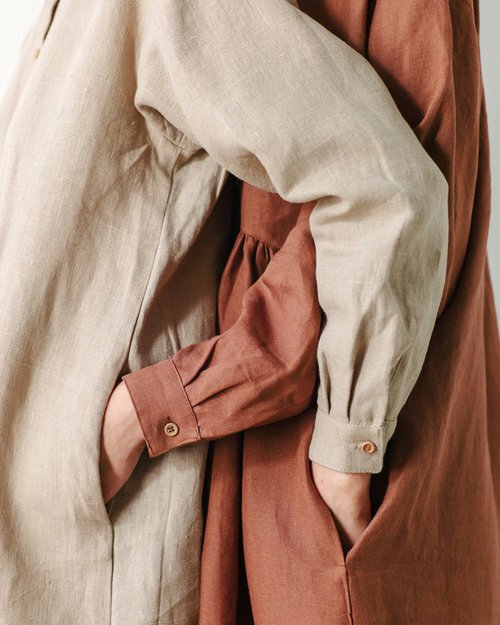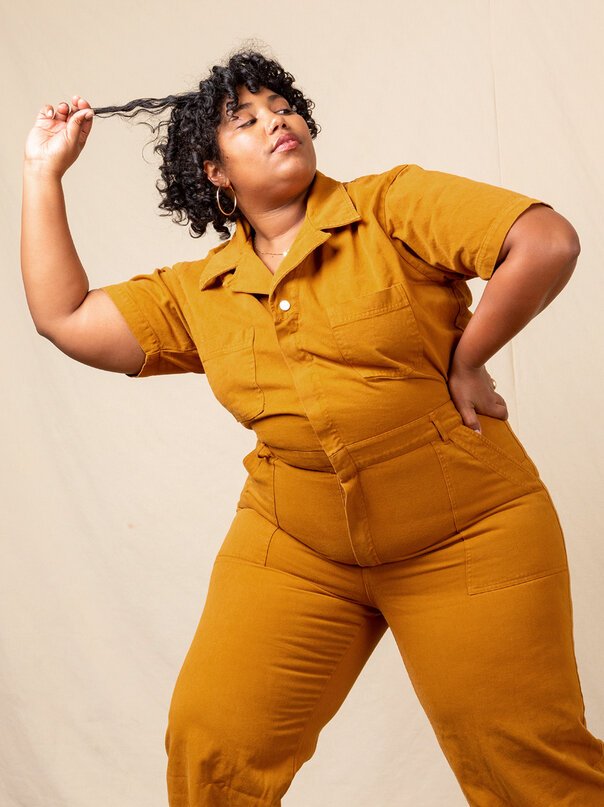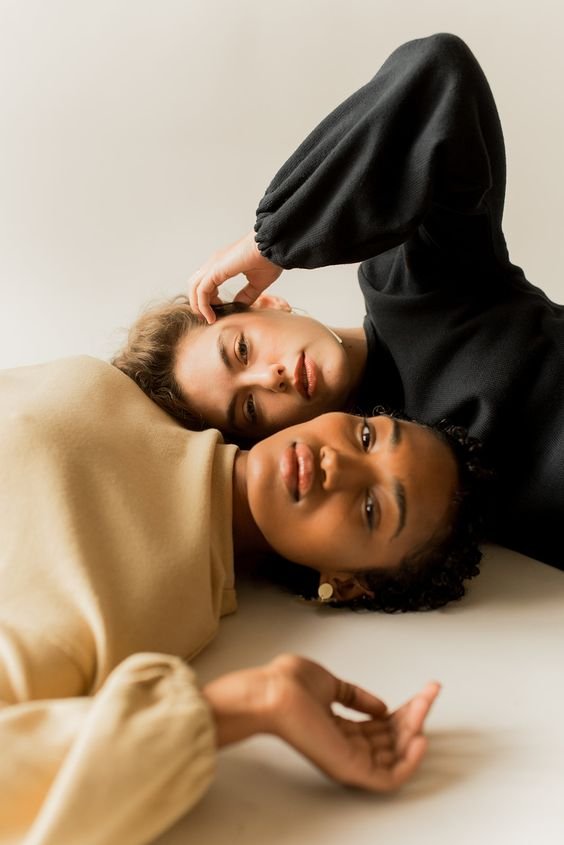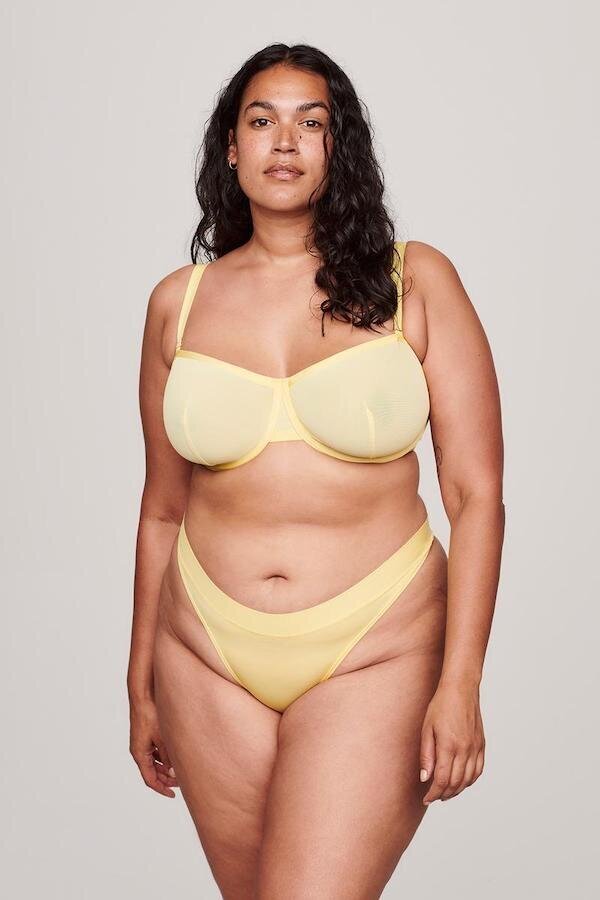
‘One Size Fits Most’ Hurts Us All
Why are fashion brands still lumping us all into one ill-fitting garment?
When my new robe arrived, I pulled it out of the box and held it to my face; I’ve coveted an ethical, sustainable robe for years, and this one, made of waffled cotton in the perfect weight, was lovely. I held it up—it looked big enough. But then I put it on, and despite fitting my upper body, it didn’t close over my crotch, which is arguably the most important part for it to cover.
All my excitement fled my body, replaced by a red-hot flush of frustration and shame. I flung the robe at my husband in the hope that at least it might fit him (it didn’t). I’d suspected this might happen. I’d allowed myself to hope, and I’d be proven wrong.
Let me back up to the beginning. Last spring, I signed up for a subscription box, despite not being much of a subscription person. I’m trying to cut back on needless purchases, not get a box of them every month. But with everything going on, I was desperate for a cheer-up, and I thought a quarterly box of ethically sourced small luxuries could be it. It was surprisingly effective: The items were of good quality, and the surprise gift element brought a little joy to my homebound days.
“Last I’d checked, a size 16, which put me somewhere between ‘Most’ and…what’s the alternative? Some? Few? A total outsider?”
Then I got the email with choices for my fall box. Two of the options were from an ethical home brand: either a set of bath towels or a robe. I already had towels, but the robe was One Size Fits Most. And I was, last I’d checked, a size 16, which put me somewhere between ‘Most’ and…what’s the alternative? Some? Few? A total outsider?
I spent hours doing futile internet research to figure out what size range ‘Most’ encompassed for this particular brand, then I gave up and took the risk. Of course, my suspicions were confirmed, and the robe still hangs in my closet, tags on, taunting me. I’ll eventually give it away to someone more ‘Most’-sized, but I have a feeling I won’t be able to shake this frustration.
As a pear-shaped, ‘small fat’ woman who used to be a pear-shaped, size-22 teen, I have strong feelings about sizing and the fashion industry. Nearly 20 years after losing 100 pounds and dipping into the top end of straight-size clothes, I still have a special place in my heart for the brands that offered me access to the youthful styles my thin friends were wearing (RIP Girlfriends LA). And despite it happening far later than it should have, I’ve been thrilled to see a few well-known brands finally offering extended sizes on select items.
Still, it’s rare. Last year, while chauffeuring my mother-in-law around town, I was forced to visit a popular alliterative athleisure brand’s outlet store. I glowered awkwardly in the corner while pretending to look through the size-8 ‘XL’ section. When a well-meaning sprite of a shop assistant asked if she could help me, I did my best to express the impossibility of their size range in the year of our lord 2020 without actually blaming their minimum-wage employees.
Certain dedicated-fatphobic brands aside, though, the fashion industry seems to be slowly getting the memo that women/femmes bigger than a size 12 exist. In fact, we make up most of the US population—and we want to buy nice clothes, ideally sustainable and ethically made. More brands are extending their size ranges, and high-end plus-size labels regularly sell out of stylish pieces that do anything but hide the bodies they clothe. Of course, many brands don’t go past size 24, and there’s still plenty of work to be done to make the fashion world more accessible to everyone, but I wish my teenage self could see the variety of clothing available now.
“The fashion industry seems to be slowly getting the memo that women/femmes bigger than a size 12 exist. In fact, we make up most of the US population—and we want to buy nice clothes, ideally sustainable and ethically made. ”
And yet, there’s this holdout against the shift to more humane sizing practices: the one-size garment. It used to be One Size Fits All, but sometime in the early 2000s, that term was largely replaced by One Size Fits Most, as if to correct the inaccuracy of ‘All’ without risking actual inclusion. I’ve been all over the sizing map in my life, from a 22 down to a 12, with a brief stint at a heartbreak-induced 10. And now I’m back up to an 18—but even at my smallest, I’ve known not to trust the lie that ‘Most’ tells.
“It was only recently, though, that I realized that I’m not the problem. The lie is.”
It was only recently, though, that I realized that I’m not the problem. The lie is. And it has me wondering, how is this still a thing? When do we start holding brands accountable for this absurd, ostensibly-inclusive-but-actually-confusingly-exclusionary sizing practice? I’m convinced the only reason it exists is because it’s cheaper for manufacturers to make one size rather than 10—it certainly doesn’t benefit consumers.
It’s not like those of us who aren’t sure about our size are served by it, since the chances that we count as ‘Most’ are likely slim (no pun intended). And do we really need the reminder from a piece of clothing that we’re outliers? We’re told every day, a thousand different ways, that we’re not embodying the societal ideal.
“Do we really need the reminder from a piece of clothing that we’re outliers? We’re told every day, a thousand different ways, that we’re not embodying the societal ideal.”
Even if a person does qualify as one of the ‘Most,’ I’m willing to bet good money (perhaps the annual subscription cost for a subscription box?) that a one-size item won’t look the same on someone at the larger end of the spectrum. An ‘oversized’ sweater might technically fit my former size-12 body, but it’s not going to drape fetchingly off my sharp-angled shoulders and clavicle the way it does on the website model. It’s simply not the same piece of clothing as it would be on someone smaller.
For all the movements aiming to force fashion retailers to make sizing more inclusive, this One Size Fits Most offense seems to go unnoticed. And it’s well past time for that to change. Is it too much to ask for a handful of options? Even the still-terrible ‘S/M, L/XL, 1X/2X’ etc. is preferable to a single size for all of us. People come in all shapes and sizes, and we deserve beautiful clothing that covers our crotches and helps us forget the trash fire that was 2020, even just for a moment.
It’s also another way that sustainability and ethical production are exclusionary: Beyond this kind of fashion being necessarily expensive, these eco-chic brands are also size-exclusive, sometimes even more than fast fashion labels. This makes it impossible to stay away from big box stores, where at least brands are aware of body diversity (and purchasing a pair of pants doesn’t max out the credit card).
“It’s time for a new sizing standard across the industry: a wide range of options, in multiple sizes to fit us all.”
The bottom line is that these vague catch-all (or -most) sizes are detrimental to the consumer. And when it comes to sustainable, ethical fashion, they’re yet another barrier to entry for people like me who want to shop more conscientiously. It’s time for a new sizing standard across the industry: a wide range of options, in multiple sizes to fit us all.
A few weeks ago, I received an email notifying me it was time to select the items for my winter subscription box. And, lo and behold, there was a One Size Fits Most sweater choice! This time, however, I was fired up enough to reach out to the company, and luckily they were able to select the plus-size version of ‘Most’ for me. But A) why was this option not listed among the choices for everyone, instead of being a secret menu item? And B) what does that mean, ‘One Size Fits Most – Plus’?
It’s a real brain-twister, and I’m far from certain this garment will fit when it arrives.
Anne H. Putnam lives in the Pacific Northwest with her husband and their cat and writes about body image, relationships, and anything else that requires an awkward amount of vulnerability. Follow her on Twitter or Instagram.




